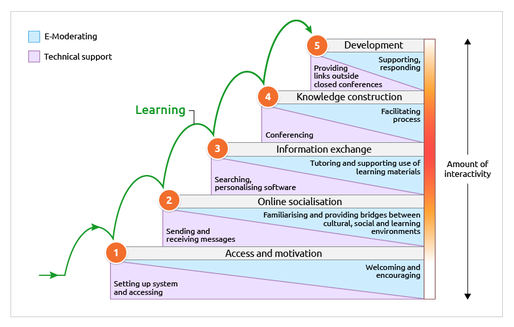Design for online and blended learning
In topic 4 our group 11 used the Saad’s Fork-joint method. After discussing the scenario we had some question-based smaller group discussions. We also decided together to use Mural as the presentation tool. Stephan uploaded and arranged it for us and put all the expected topic 4 material collected on the Mural. Very visible! We also added more things like films, models etc, that could be interesting for the whole group. We presented our findings for each other and then we decided to film the session through the Zoom and Stefan took the lead and guided each person to his/her part on the mural, when it was the time to speak. We had a great time and a lots of laughs’ when adding and moving around the last text, -together at the same time! Wow what an experience and super collaborating time! Everyone had patience, kindness and openness for each ones shortcomings…
We spent 2½ hour to film and “refilm”- (the first film “disappeared”). Anya lost her wifi but succeeded to come back right when it was her time to speak! Welcome to have a look on the presentation! https://drive.google.com/file/d/1-r7Bg4w5y0WPP_ERYVT3T5cMbU7uT0pr/view
Regarding to the focus on emotions we/I have passed through all kinds… from Frustration, especially to find around the ONL webpage, all the new tools- very time consuming, Curiosity of the course content and socially about the group, Shyness when it comes to talk English and bad self-esteem (I know “nothing” compared to my group mates) and Happiness and Humour while working together, to Satisfaction and Flow- when everything works! As a visual example of how feelings/emotions are related to competence contra challenge, the Four channels model inspired by Csikszentmihalyi (1990) in Lachmann, Ponzer, Johansson, Benson & Karlgren (2012), shows that optimal ‘flow’ is occurring when learners experience the task or situation as meaningful, challenging and they have adequate competence to manage it- like for example managing the online-tools. If the student can’t manage or doesn’t understand the course instructions or cannot communicate with the group it’s an obstacle for learning the actual ILO:s.

As an online teacher it’s very important to considerate and deal with all these emotions among the students, but also their own feelings- to be expressed or not…?
Another aspect of course design is to make it inclusive for all kinds of student weather it is a fully functional or a student with any kind of disability. UNL- Universal Design of Learning is a set of principles that can capture the thinking around the course-design, blended or fully online. It need to be accessible for students with language-, vision-, hearing- and other problems. If so- it will suit all students! It is closely connected to the Community of Inquiry framework (CIF) with the parts of Social-, Cognitive- and Teaching presence, where the emotions, regarding to M. Cleveland Innes webinar-talk, I think are to be extra considered for students with disabilities.
The ABC curriculum design, (UCL 2015) is a method to make the design frame on a collaborative story board. You use different cards where the colours marks the different themes; Acquisition, Collaboration, Discussion, Investigation, Practise and Production. On the back side of each card there are suggestions of different activities to do in a blended- or online part of the course. Then you visually build the course week by week and fill it out with activities that in the end will lead the students to the production/presentation that will show how they reached the intended learning outcomes. As a framework and scaffold you could use the Five stage model to get the best order of facilitation and students progression and e-tivities in your design.

Gilly Salmon: https://www.gillysalmon.com/five-stage-model.html
The reader probably knows all about this, but for me as a beginner, it’s useful to print it down and try to merge all the useful models in to one BIG ……..It will be the next step!
References:
CAST- Center for Applied Special Technology http://udlguidelines.cast.org/ Available: 2019-12-05
Lachmann.H., Ponzer.S., Johansson. U-B., Benson. L. & Karlgren.K., (2012) Capturing students’ learning experiences and academic emotions at an interprofessional training ward. Journal of Interprofessional care, 137-145 , Vol 27, 2013.
UCL-University College London(2015) -ABC (Arena Blended Connected) curriculum design – https://blogs.ucl.ac.uk/digital-education/2015/04/09/abc-arena-blended-connected-curriculum-design/ Available: 2019-12-05
Vaughan, N. D., Cleveland-Innes, M., & Garrison, D. R. (2013). Teaching in blended learning environments: Creating and sustaining communities of inquiry. Edmonton: AU Press Available: 2019-12-05